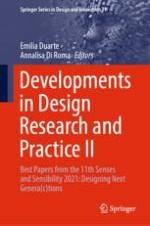This book reports on innovative research and practices in contemporary design, showing how to integrate different concepts and discussing the emerging role of design in different field, its meaning for humans and citizens, as well as its impact on society and the global ecosystem. Gathering the best papers from Senses & Sensibility, held on December 9-11, 2021 in Bari, Italy, it highlights the role of design in fostering education, physical and social wellbeing, industrial innovation and cultural preservation, as well as inclusivity, sustainability and communication in a world facing complex challenges on a global scale.
